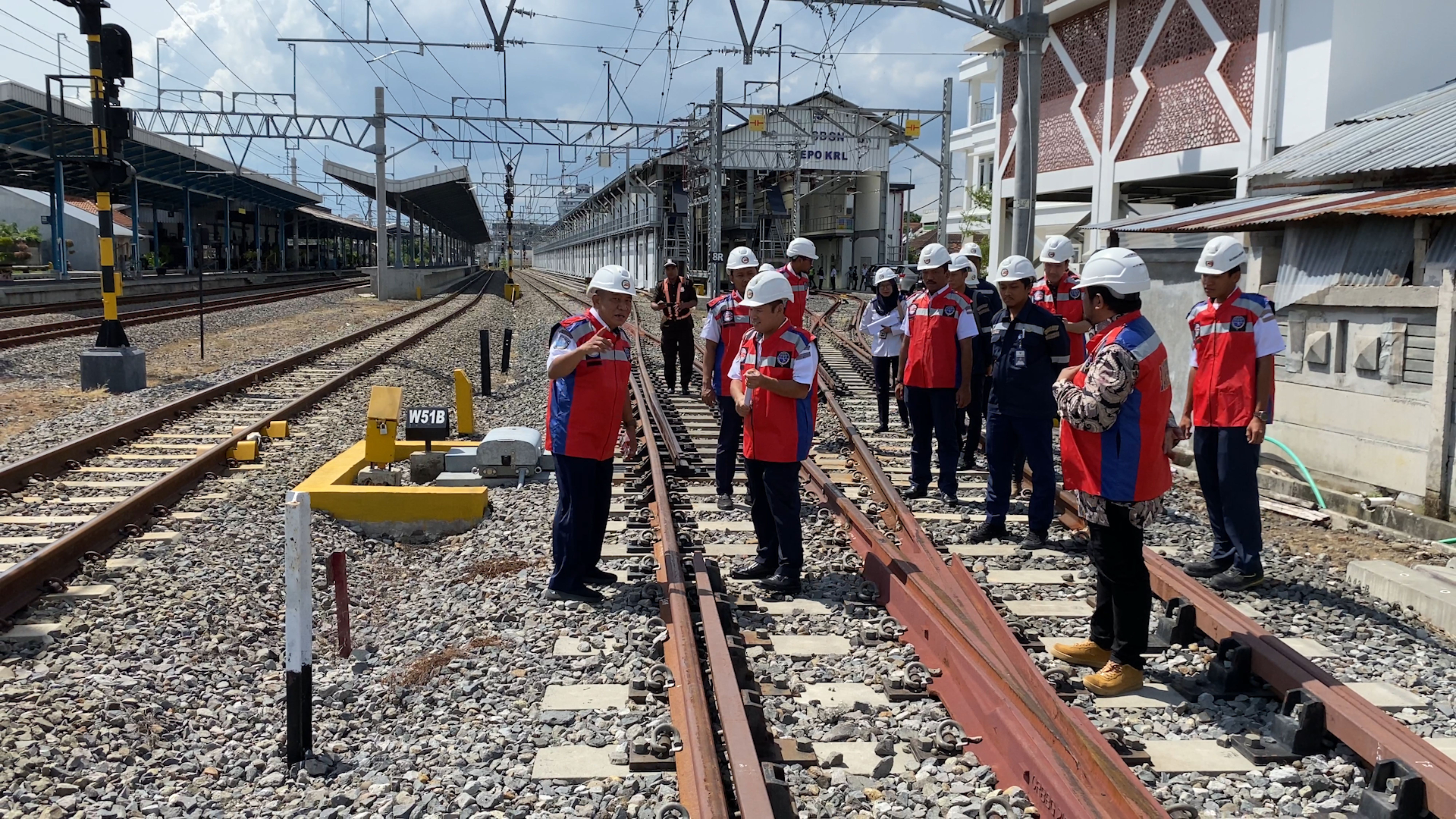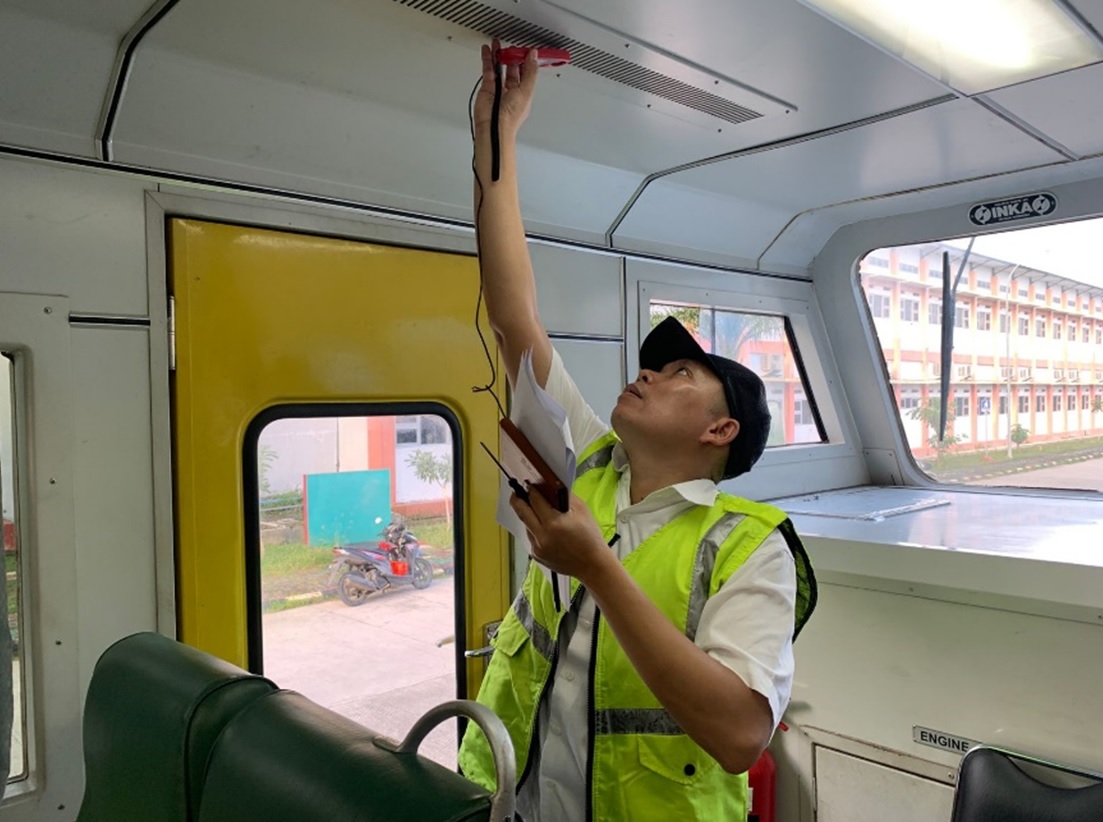Weight Test on Inspection Trains owned by PT Kereta Api Indonesia (Persero)

BEKASI – Trains with self-propelled engines that function to carry out inspections along railroad crossings. The Inspection Train is an official carriage. Inspection is defined as supervision of the technical and operational feasibility of providing railway infrastructure and facilities.
In order to meet technical requirements and ensure operational feasibility, Railway Facilities including Inspection Trains (KAIS) must be tested and inspected.
The tests carried out were in the form of Static Tests carried out at the Tanah Abang Locomotive Depot, as well as Dynamic Tests carried out on the route between Tanah Abang Stations and Cikampek Station.
As for some Static Test Items include:
1. Dimensional Testing;
2. Testing of Facility Limit Spaces;
3. Weight Testing;
4. Braking Testing;
5. Crack Testing;
6. Load Testing;
7. Air Circulation Testing;
8. Temperature Testing;
9. Electrical Testing;
10. Noise Testing;
11. Light Intensity Testing;
12. Exhaust Emission Testing;
13. Horn Testing;
14. Communication Equipment Testing;
15. Leak Testing.
One of the Static Test Items which is important is the Railway Facility Weight Test. The purpose of the Railway Facility Weight Test is to determine the total weight and weight distribution on each train wheel by using a weight measuring instrument.
The weight test is carried out by calculating the total weight of the train and calculating the weight distribution on each wheel of the train by weighing the load received on each wheel. The tool used for the Weight Test of Railway Facilities is the Portable Train Weight (PTW).
The workings of the Railway Facility Weight Test are as follows:
1. The Portable Train Weight (PTW) is clamped on the inside of the right and left railroads.
2. Then connected to the Weighwell monitor.
3. The facilities that will be carried out for the Heavy Test cross the railroad track that has been placed by Weighwell with a maximum speed of 5 km/hour.
4. The results listed on the Weighwell monitor are printed and analyzed according to the standard train weight that has been determined.
In addition to Static Testing, Dynamic Testing is also carried out with several items as follows:
1. Braking Testing;
2. Temperature Testing;
3. Vibration Testing;
4. Load Testing;
5. Acceleration Testing;
6. Air Circulation Testing;
7. Electrical Testing;
8. Noise Testing.
The results of the tests that have been carried out will be submitted to the Directorate of Railways Rolling Stock for further processing of certificate issuance.






_(2).png)
_(3).png)
_(740_×_322_piksel).png)
_(2).png)


Komentar
LOGIN FOR COMMENT Sign in with Google